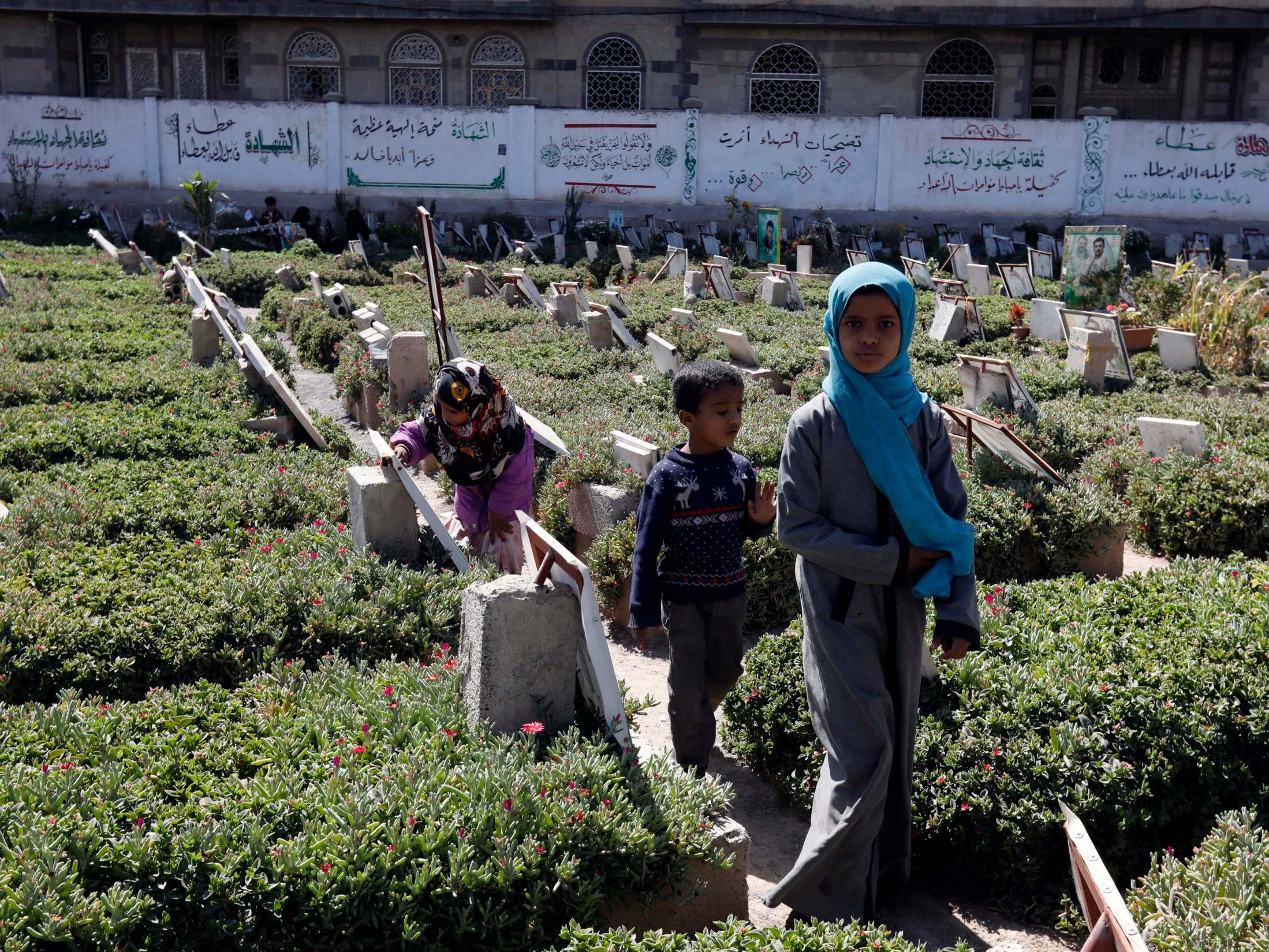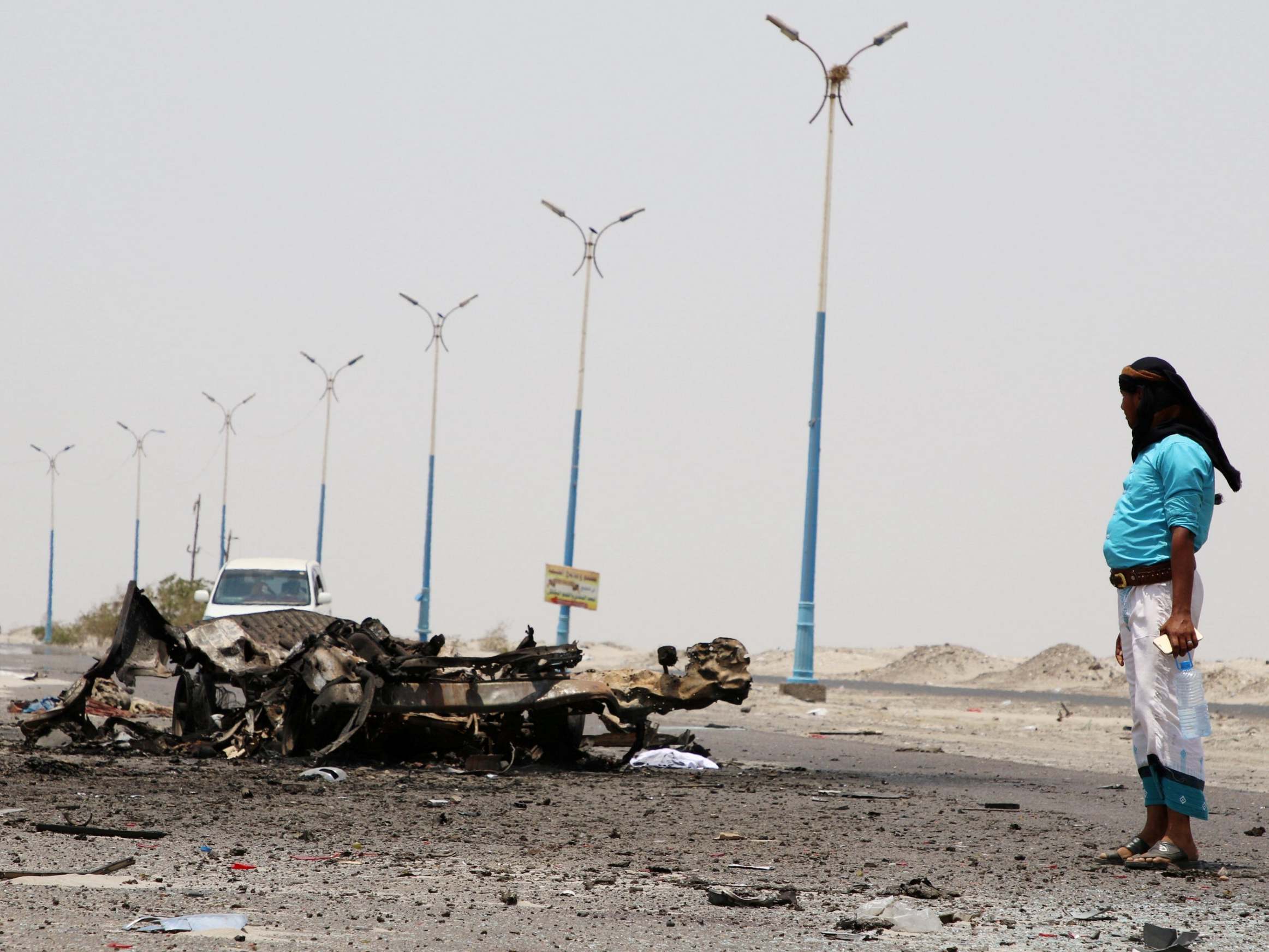Signs of peace in the unwinnable war
The rising political cost for foreign powers in Yemen’s brutal conflict could usher in an end to the fighting that has destroyed a nation, writes Patrick Cockburn


A Saudi tugboat towing a South Korean drilling rig and a sand dredger were hijacked this month by armed Houthi rebels in the Red Sea and taken to a nearby Yemeni port. The Saudi-led coalition, which has been fighting the Houthis since 2015, denounced the seizure as “a terrorist operation”. The Houthis, in control of most of north and central Yemen, said that they were checking the vessels in case they belonged to a hostile state.
Given that Saudi bombing has killed at least 8,000 Yemenis in the past four years and the Houthis’ claim they’ve carried out devastating drone and missile attacks on Saudi oil facilities, the outlook for the three vessels and their crews looked potentially grim. But after a few days they were released. This may be one small sign that discussions between the Saudis and Houthis about de-escalating the Yemen war may be getting somewhere.
Raiman al-Hamdani, a Yemeni expert at the European Council for Foreign Relations, says cautiously that “there is a better chance now for a peace settlement” than previously because all the players in Yemen have an interest in, at least, talking about peace.

But there are also good reasons for scepticism about bringing an end to a war made up of multiple but interrelated conflicts fought on many fronts. Peace agreements in Yemen – of which there have been many over the years – traditionally sound positive, because they are full of details and deadlines, but these tend to evaporate during or before implementation.
Probably the most that can be expected from current or future agreements between the Houthis and Saudis or anybody else is that they freeze the present military stalemate but without anybody publicly abandoning their original objectives. This is not the best news for the 24 million Yemenis – 80 per cent of the population – in need of humanitarian assistance, or for those without access to clean drinking water who may soon join the 700,000 suspected cholera cases. Nevertheless, an armed and unsteady truce is about the best that can be expected at this stage of the conflict.
Aside from the usual ritualistic expressions of distress, the first three years of the war in Yemen saw little indication of regional or world powers doing anything to avert what rapidly became the greatest humanitarian crisis on the planet. But there are encouraging signs that this lack of concern has begun to change over the year, sometimes for reasons that have little to do with Yemen itself.
The war is particularly difficult to end in Yemen because it is a country where governments historically have never monopolised armed force. Power has always been fragmented, divided between central government, tribes, parties, cities and regions, many of which have had foreign sponsors. Limited local wars were common, but so too were limited local agreements that brought them under control through mediation and compromise.

What makes the present conflict so different from those of the past is that, when Saudi Arabia and the United Arab Emirates launched the war in 2015, they expected it to swiftly produce winners and losers. Naturally, Saudi Crown Prince Mohammed bin Salman, then defence minister, expected Saudi Arabia, with its vast wealth and access to sophisticated weaponry, to be an easy winner over the Houthis, a militarised religious movement rooted in the northern Yemeni tribes espousing the Zaidi variant of Shia Islam. He sought to restore President Abed Rabbo Mansur Hadi to power in the Yemeni capital Sana’a from which he had been driven in 2014. In the meantime, Hadi was to stay under tight Saudi control in Riyadh, where he remains to this day.
The crown prince made the same mistake that the Americans had made in Afghanistan in 2001 then again in Iraq in 2003. Like them he exaggerated the strength of his own country and underestimated the danger of trying to put a powerful local player permanently out of business. It may also be convenient to have obedient local forces such as President Hadi or the separatist Southern Transitional Council (STC), which is backed by the UAE, but their status as proxies of a foreign country limits their ability to win a war outright.
24m
Yemenis are in need of humanitarian assistance
After four years of fighting, the battle lines have moved surprisingly little, though at least 100,000 Yemenis have died and much of the country is devastated. The Houthis still hold Sana’a and most of northern and central Yemen along with the crucial port city of Hodeidah on the Red Sea coast. The STC and Hadi’s forces together control Aden as well as south and east Yemen.
In addition, the battlefield is complicated by local warlords, paramilitaries, parties and tribes that fight or do not fight or switch allegiances. This fluidity of loyalties – like the War of the Roses in 15th-century England – means that even well-informed Yemenis are often uncertain about who is in control of what at any particular moment. An agreed withdrawal of forces by one side may turn to mean that fighters have simply put on a different uniform and are not going anywhere.
An example of this is the return of the internationally recognised government of President Hadi to Aden last weekend under a power-sharing agreement with the separatists of the STC who want south Yemen to be independent again, as it was until 1990. But Hamdani says that the STC, which took over Aden in 2018, still effectively controls the city and remains strongly supported by the UAE, though it was supposed to have withdrawn from the war earlier this year.

These advances and retreats are taking place under the terms of the Riyadh Agreement signed on 5 November, which is intended to end a three-month war between President Hadi’s government forces, backed by Saudi Arabia, and the STC fighters, supported by the UAE. Though all are members of the anti-Houthi coalition, this did not stop them fighting each other in August as they launched offensives and counter-offensives over long distances east of Aden. This intra-coalition war only ended when the UAE bombed advancing government troops, reportedly killing 300 of them.
A de-escalation of violence in Yemen is more likely than in the past. Changes in the balance of power in the Middle East are tipping the balance towards a cessation of fighting, if not a permanent peace
The last significant attempt to change the balance of forces in the war against the Houthis came last year with a UAE and Saudi-orchestrated attempt to take Hodeidah. The port city on the Red Sea is the last vital lifeline for bringing in food to Houthi-controlled territory. The attack was ended by the UN-brokered Stockholm Agreement, reached in December 2018, under which Hodeidah was to be demilitarised, prisoners released, Sana’a airport reopened, and other radical measures taken to de-escalate the war. Not much of this was implemented, but the accord, reached under strong US pressure, did stop a catastrophic battle for Hodeidah, which would have cut off food supplies to millions of people already suffering from malnutrition.
Cynicism about the agreements reached in Stockholm and Riyadh is rife among Yemen experts, but they did show that foreign powers no longer believe that their side can win a decisive victory. There is also greater consciousness in the world that the war is killing, starving and impoverishing millions of people.
A de-escalation of violence in Yemen is therefore more likely than in the past, though it is by no means certain. In addition, changes in the balance of power in the Middle East are tipping the balance towards a cessation of fighting, if not a permanent peace. Saudi Arabia and the UAE increasingly recognise the unwinnability of the war against the Houthis. They may still hope for a Saudi protectorate over north Yemen and an Emirati protectorate over the south, but they have been a long time coming.

Both powers have found that they were paying an increasingly high price in terms of international condemnation over intervention in Yemen without making much progress towards their goals. The UAE decided to withdraw its forces and, at least nominally, turn over its dominant role in south Yemen to the Saudis.
For Saudi Arabia, the outcome of the war has not been happy: what the crown prince had intended to be a demonstration of Saudi strength has instead become a demonstration of weakness. Frustration in Yemen also comes at a time when Saudi Arabia’s political status has been battered by a series of setbacks and fiascos, notably the murder and dismemberment of Saudi journalist Jamal Khashoggi in Istanbul.
Trump turned out to mean what he had said about not fighting other people’s wars and did not retaliate militarily against Iran. It was a pivotal moment in the regional balance of power
Damaging in a different way, the friendship with Donald Trump has turned out to be considerably less advantageous to Riyadh than had been supposed when he made his triumphal visit to Saudi Arabia in 2017. When drone and missile smashed into Saudi oil facilities in September – an attack claimed by the Houthis but probably carried out partly or entirely by Iran – the US president turned out to mean what he had said about not fighting other people’s wars and did not retaliate militarily against Iran. It was a pivotal moment in the regional balance of power: the Saudis discovered that Iran was able to seriously damage their oil industry and the US was not going to defend them.
Ironically, the Saudis have justified their war in Yemen since 2015 by claiming that the Houthis were a proxy of Iran, though there is little evidence for this. Iranian backing may amount only to some money, advice and missile parts, but Saudi and US accusations have propelled the Houthis into the cold and hot war between the Saudi-led coalition of Sunni states confronting the Iran-backed Shia ones. Perception that the Houthis are part of the latter grouping gives small incidents like the hijacking of the Saudi vessel in the Red Sea a significance they would not otherwise possess.
The increased visibility of the war in Yemen over the past year has raised its political cost to Saudi Arabia and UAE – so much so that the Emiratis say they have withdrawn their forces. They have not won the victory in Yemen they once expected, but neither have they suffered defeat. This opens the door to a ceasefire or series of ceasefires that formalise the present unsatisfactory stalemate, but will not bring an end to the war that has destroyed Yemen.
Join our commenting forum
Join thought-provoking conversations, follow other Independent readers and see their replies
Comments